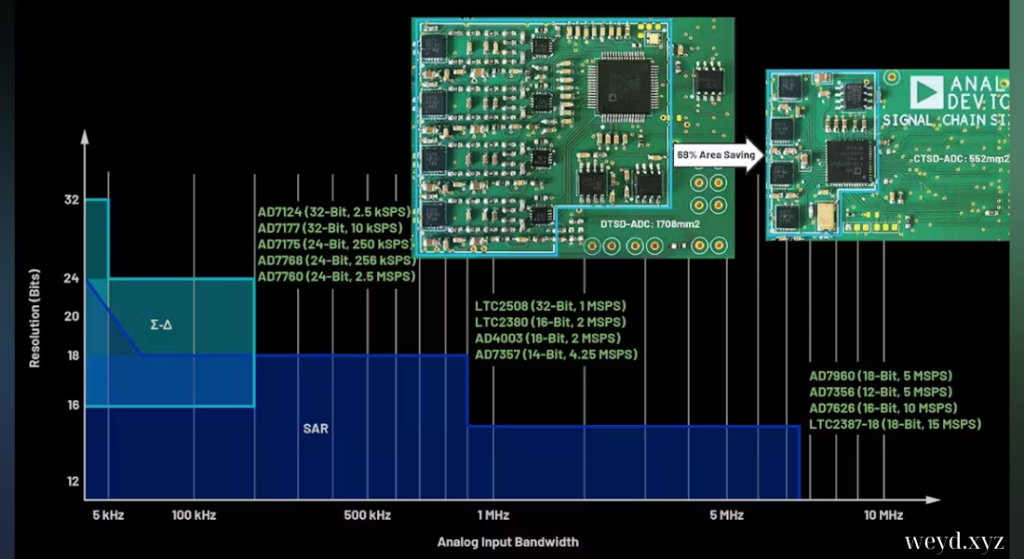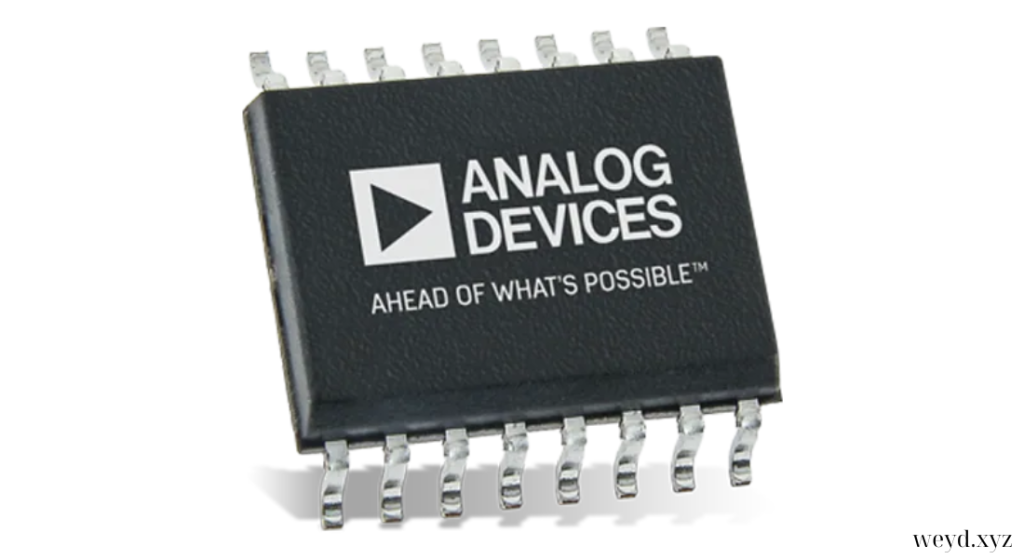In today’s digital landscape, the ability to convert analog signals into digital data and vice versa is essential for numerous applications across various sectors. From consumer electronics to industrial automation and telecommunications, the demand for high-precision data conversion continues to grow. Analog Devices, Inc. (ADI) is recognized as a leading provider of data conversion solutions, offering a comprehensive range of products designed to meet the diverse needs of engineers and developers. This article explores the significant benefits of integrating ADI data converters into your projects, detailing their features, applications, and best practices for implementation.
Key Highlights
- Overview of ADI Data Converters: A detailed look at the types of data converters offered by Analog Devices and their specific functions.
- Key Features and Benefits: An exploration of the essential features that make ADI data converters integral to advanced applications.
- Applications Across Industries: How ADI data converters are utilized in various sectors to enhance performance and reliability.
- Best Practices for Integration: Tips for effectively implementing ADI data converters in your projects.
- Evaluating Your Project Needs: Techniques for selecting the right ADI data converter for your specific application.
1. Overview of ADI Data Converters: A Comprehensive Look
Analog Devices provides a diverse portfolio of data converters that play a critical role in various electronic systems. The primary types of data converters offered by ADI include:
- Analog-to-Digital Converters (ADCs): ADCs convert analog signals into digital data, enabling processing, analysis, and transmission in digital systems. ADI’s range of ADCs varies from low-power options suitable for portable devices to high-speed converters used in telecommunications and data acquisition systems.
- Digital-to-Analog Converters (DACs): DACs serve the opposite function, converting digital signals back into analog form. This process is essential for applications such as audio processing, signal generation, and video playback. ADI’s DACs are known for their precision and performance, making them suitable for demanding applications.
- Integrated Data Converter Solutions: ADI also offers integrated solutions that combine ADCs, DACs, and other signal processing functions on a single chip. These integrated data converters optimize performance, reduce design complexity, and minimize the overall footprint of electronic systems.
2. Key Features and Benefits: Powering Your Projects
Integrating ADI data converters into your designs offers numerous advantages that can significantly enhance project outcomes:
- High Precision and Accuracy: ADI data converters are designed to deliver exceptional accuracy, ensuring that the digital representation of the analog signal is as true to the original as possible. This precision is critical for applications requiring meticulous measurements, such as medical instrumentation, industrial control systems, and scientific research.
- Wide Dynamic Range: Many ADI converters feature a wide dynamic range, allowing them to handle both small and large signals without distortion. This capability is essential in applications where signal variability is significant, such as audio processing and communications.
- Low Noise Performance: ADI’s data converters are engineered to minimize noise, which is vital for maintaining signal integrity in sensitive applications. Low noise performance ensures reliable operation in environments with electromagnetic interference, making them suitable for industrial and automotive applications.
- Flexible Sampling Rates: ADI data converters support a variety of sampling rates, allowing designers to choose a converter that matches their application’s specific needs. This flexibility is essential for applications that require real-time data processing, such as audio streaming and high-definition video.
- Robust Development Ecosystem: ADI provides a comprehensive set of development tools, including evaluation boards, reference designs, and software libraries. These resources facilitate a smoother development process, helping engineers bring their ideas to life more efficiently.

3. Applications Across Industries: Versatile Usage
ADI data converters are utilized in a wide array of applications across multiple industries, demonstrating their versatility and effectiveness:
- Consumer Electronics: In devices like smartphones, tablets, and smart home devices, ADI data converters enable high-quality audio and video processing, enhancing user experiences. Their ability to convert audio signals with low distortion improves sound quality, while video converters ensure high-definition playback.
- Automotive: ADI converters are critical in automotive systems for applications such as advanced driver-assistance systems (ADAS), infotainment systems, and motor control in electric and hybrid vehicles. Their robustness and reliability are crucial in ensuring vehicle safety and performance. For instance, high-precision ADCs are used for sensor data acquisition in safety-critical applications.
- Industrial Automation: In industrial settings, ADI data converters facilitate precise monitoring and control of processes, contributing to improved efficiency and productivity. They are essential in applications such as process control, robotics, and machine vision systems, where accurate data conversion is vital for system performance.
- Healthcare: In medical devices, ADI data converters support functions such as patient monitoring, diagnostics, and imaging systems. Their high precision and low power consumption are critical for delivering accurate and reliable health data, ensuring patient safety and effective treatment.
4. Best Practices for Integration: Ensuring Successful Adoption
To effectively integrate ADI data converters into your projects, consider the following best practices:
- Define Your Requirements: Clearly outline your application’s performance, power, and signal requirements. This understanding will guide your component selection and design process, ensuring you choose the most suitable data converter for your needs.
- Choose the Right Converter: Select an ADI data converter that aligns with your project specifications. Consider factors such as resolution, speed, power consumption, and the nature of the signals you are working with. For example, if you require high-speed data acquisition, consider ADCs that support fast sampling rates.
- Utilize Development Tools: Take advantage of ADI’s development tools and resources, including evaluation boards and reference designs, to streamline the development process and reduce time-to-market. These tools can help you prototype and test your designs quickly.
- Engage Technical Support: ADI offers robust technical support to assist with integration challenges and optimization. Their experts can provide valuable insights to enhance your project, helping you troubleshoot issues and maximize performance.
5. Evaluating Your Project Needs: Selecting the Right Data Converter
When choosing an ADI data converter for your project, it’s essential to evaluate your specific needs:
- Performance Requirements: Assess the precision and accuracy required for your application. Higher resolution converters may be necessary for applications like medical devices and scientific instruments, where even minor inaccuracies can lead to significant issues.
- Speed Considerations: Determine the required sampling rate for your application. Applications that process high-frequency signals will need converters with higher sampling rates to capture data accurately without aliasing.
- Power Consumption: Evaluate the power requirements, especially for battery-operated devices. Selecting low-power options can significantly extend battery life and reduce energy costs. Look for converters with power-saving features that can operate in different modes depending on the application’s state.
- Cost Considerations: Consider your budget and the total cost of ownership, including development tools, licensing, and potential production costs. Higher-quality converters may come with a higher initial cost but can lead to savings in the long run through improved performance and reduced maintenance.
Conclusion
Integrating ADI data converters into your projects can significantly enhance performance, accuracy, and reliability. By leveraging the capabilities of these high-quality components, you can ensure that your designs meet the demands of today’s complex electronic landscape, paving the way for innovation and success in your applications. ADI’s commitment to quality, performance, and support makes their data converters a top choice for engineers and developers across various industries.
FAQ
- What types of data converters does ADI offer?
ADI provides a wide range of data converters, including analog-to-digital converters (ADCs), digital-to-analog converters (DACs), and integrated solutions that combine both functionalities. - How can ADI data converters improve my design?
ADI data converters enhance precision, reduce noise, and improve the overall performance of your systems, ensuring accurate data processing and analysis. - Are ADI data converters suitable for automotive applications?
Yes, ADI data converters are designed to meet the stringent requirements of automotive applications, offering robust performance and reliability in critical systems. - Where can I find support for integrating ADI data converters?
ADI provides extensive technical support, including development tools, evaluation modules, and documentation to assist with integration and optimization. - How do I select the right ADI data converter for my application?
Consider your application’s specific requirements, such as performance, power consumption, and peripheral needs, and consult ADI’s resources for guidance.


